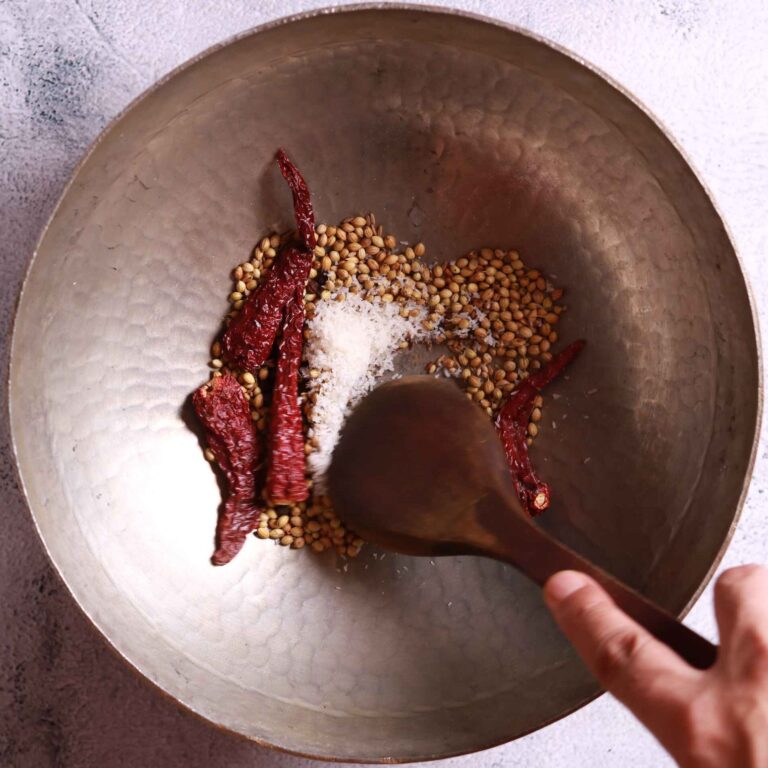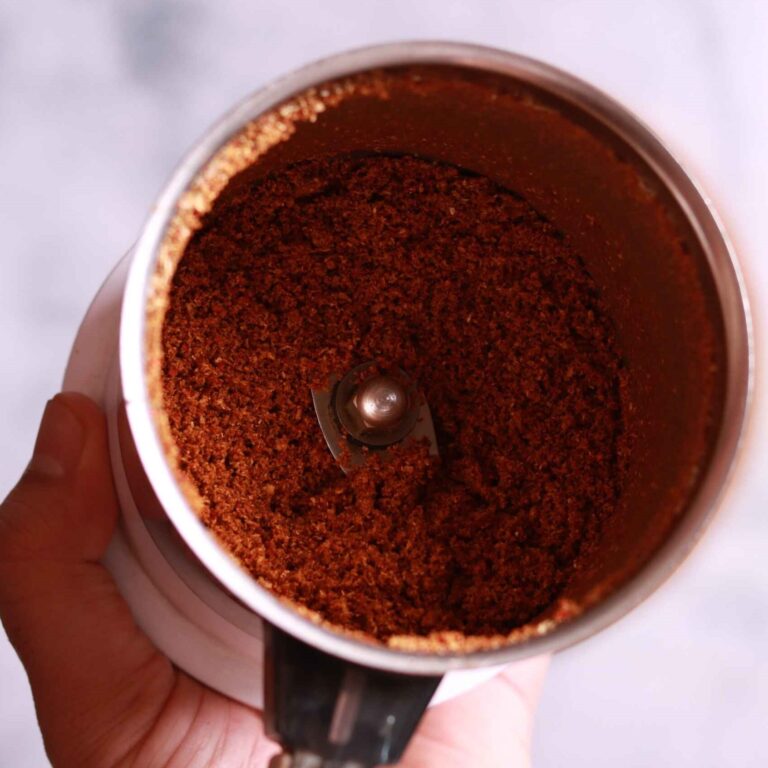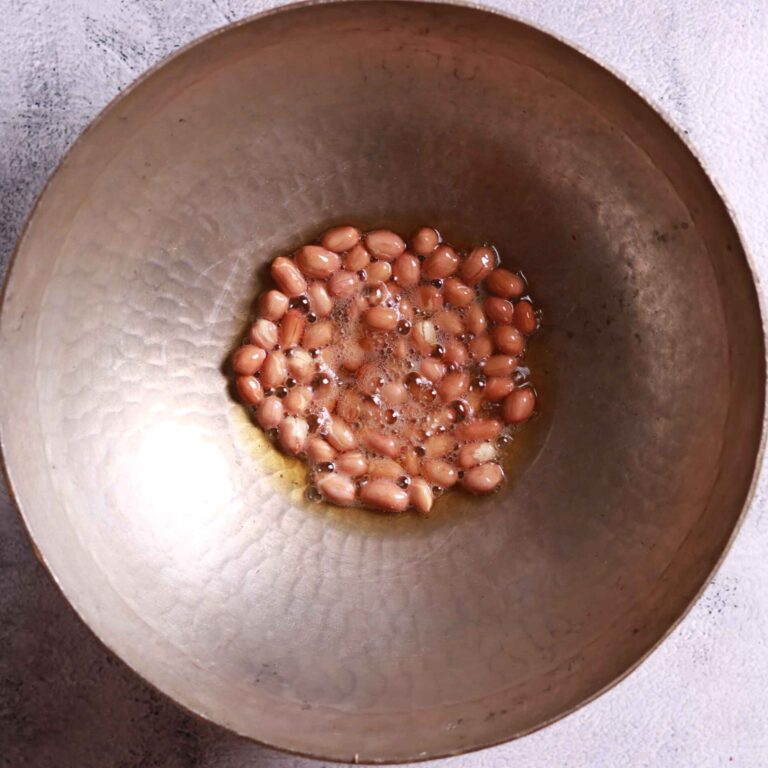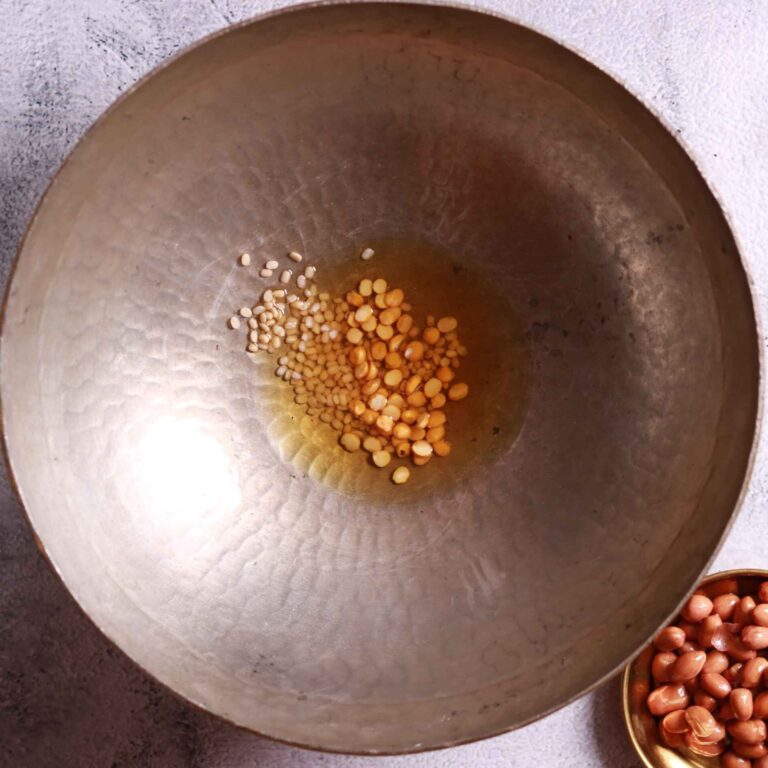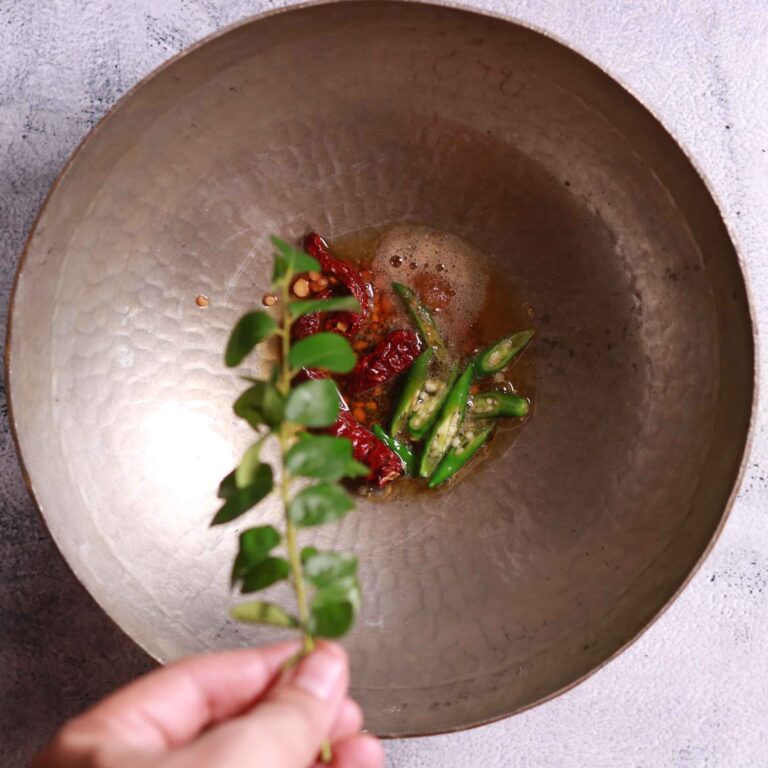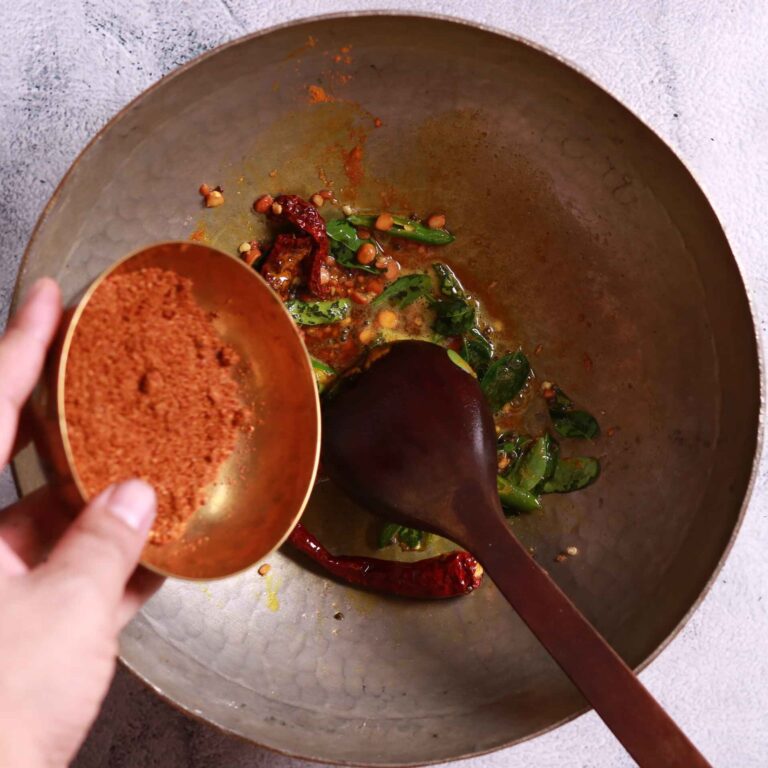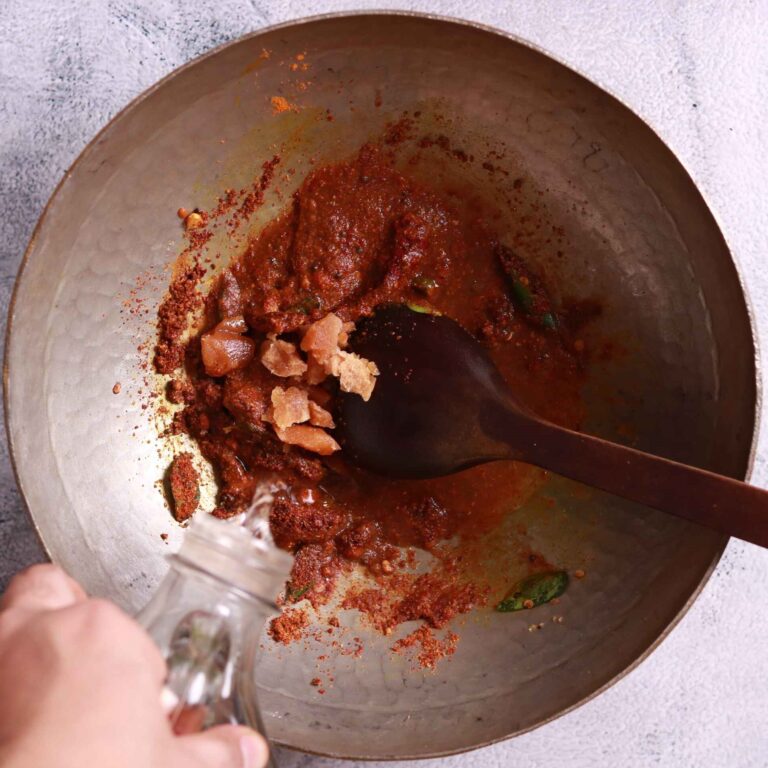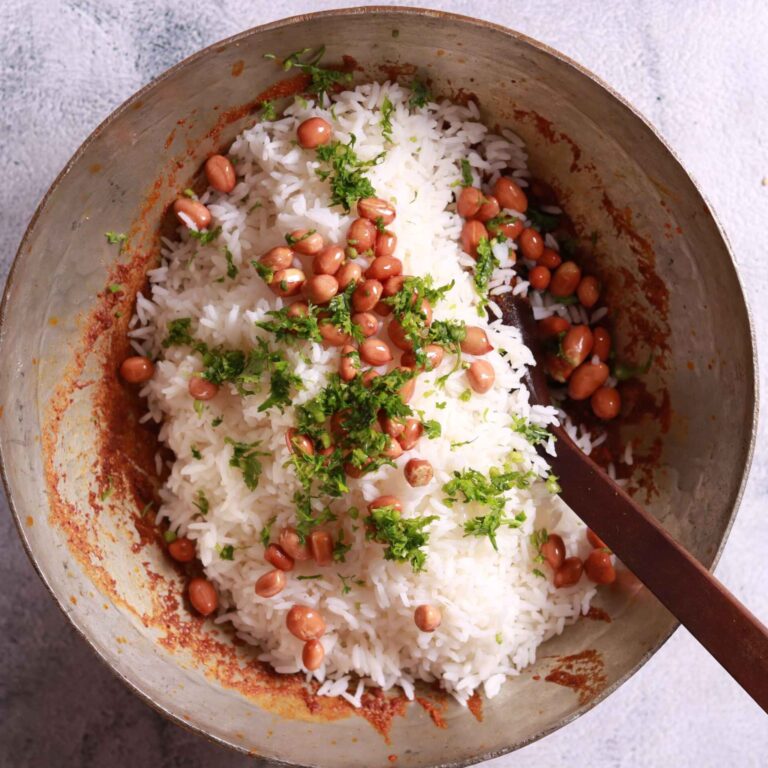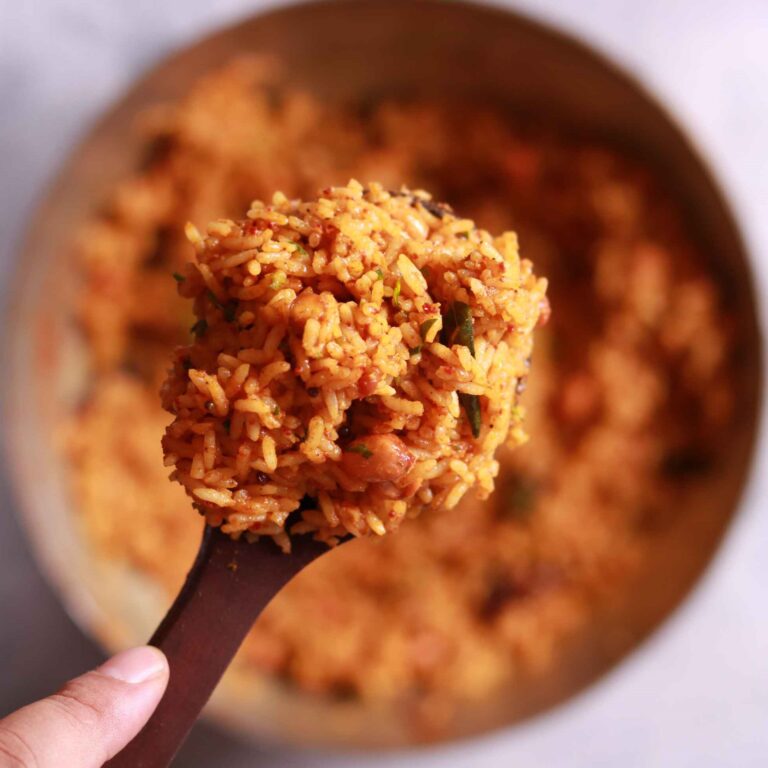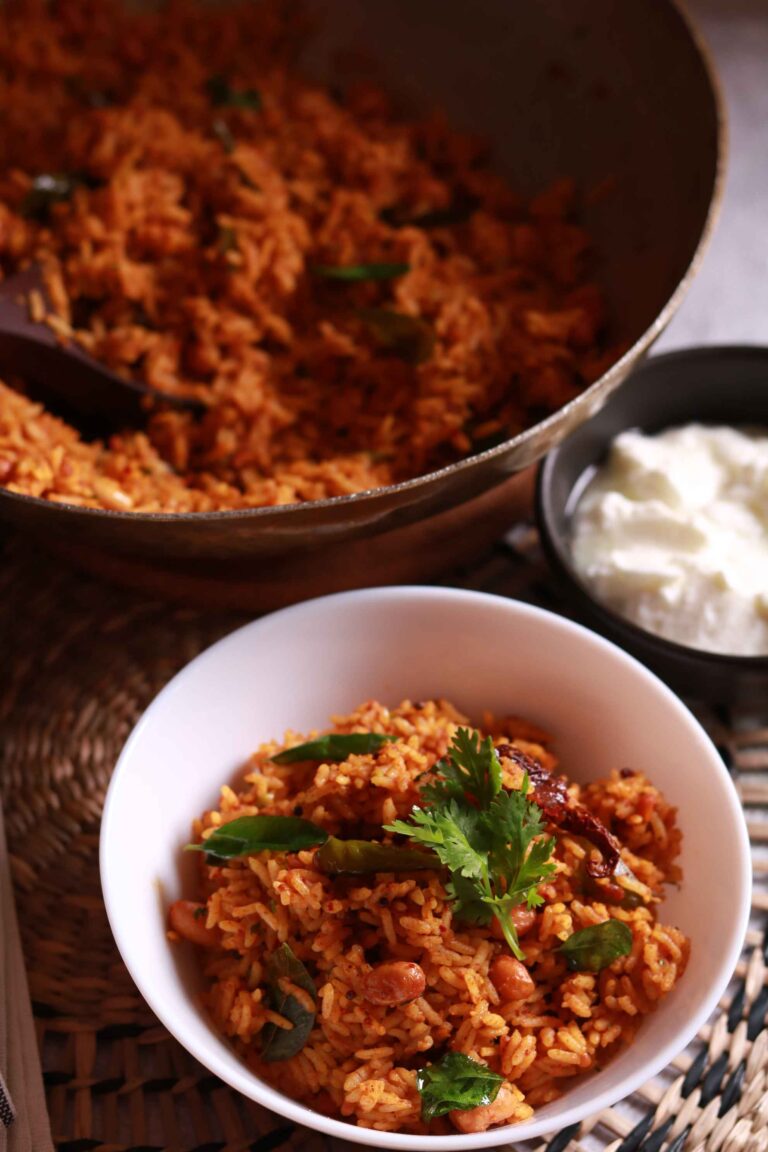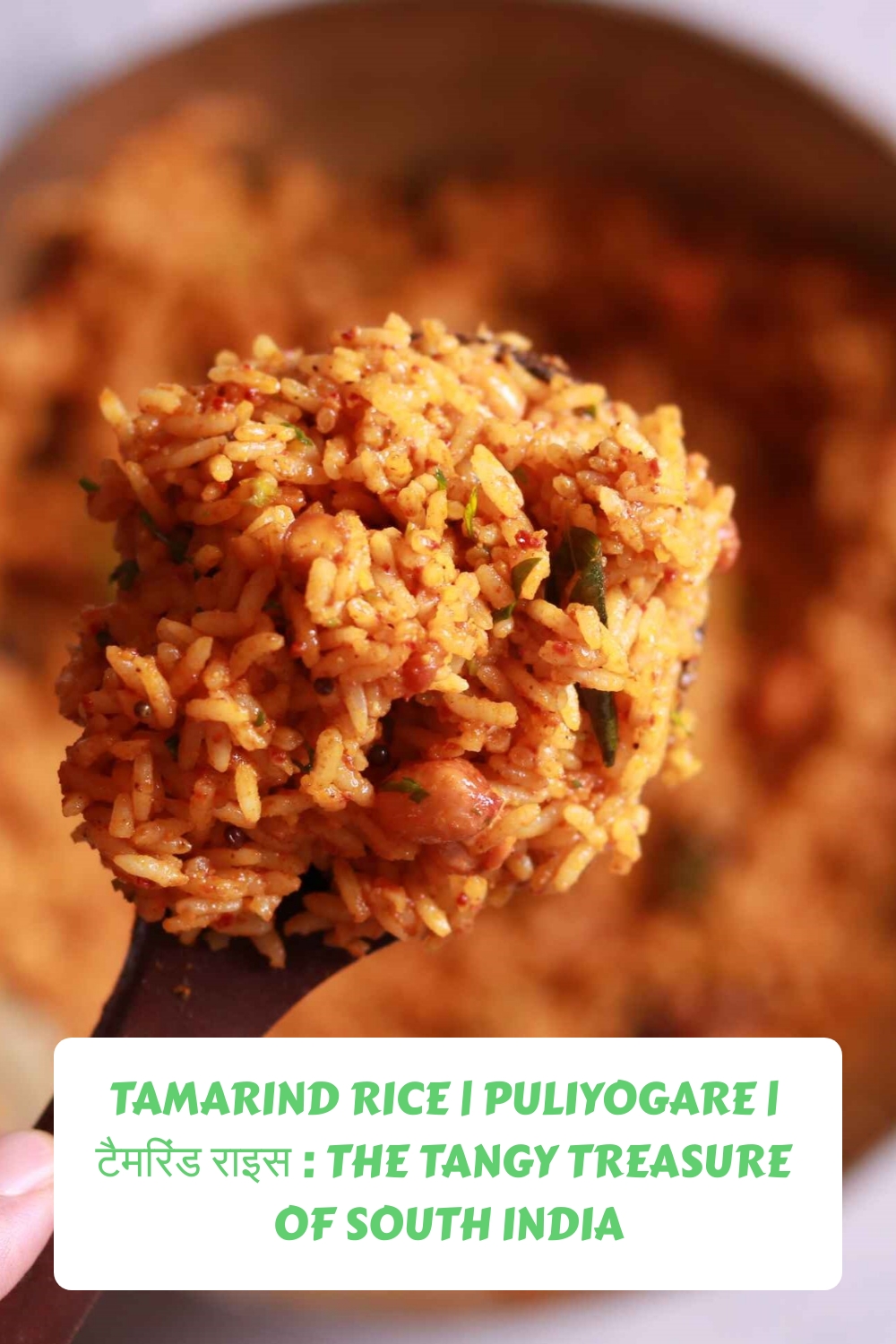Among South Indian dishes, the Puliyodarai recipe or Tamarind Rice recipe is an all-time masterpiece. For those who grew up on Indian wholesome food, it’s sour and spicy—a dish that evokes cherished memories. This rice dish is filled with many tastes that thrill the palate, and it is easy to make with ingredients commonly found in the house. Whether for a quick meal, a travel snack, or intended for use in any ritual, tamarind rice helps project the perception that every bite is worthwhile.
Thus, it is interesting to learn about the history of this dish while getting ideas on how to prepare a delicious tamarind rice recipe at home.
Why I LOVE… Tamarind Rice Recipe (Puliyogare)!

The tamarind rice recipe is one of my favourites! The combination of sour and tangy flavours does it for me every time. The tamarind provides a SHARP taste, while the spices cool things down like a soothing balm after a long day. It’s EFFORTLESS to cook and adaptable; you can enjoy it independently or with curd and crispy papad. What can be better than a dish that embodies the comfort of home? The mouthfeel is delightful, too—soft rice enveloped and studded with peanuts or cashew nuts. To my father, this is a bowl of nostalgia. Tamarind rice is a food I will never say NO to!
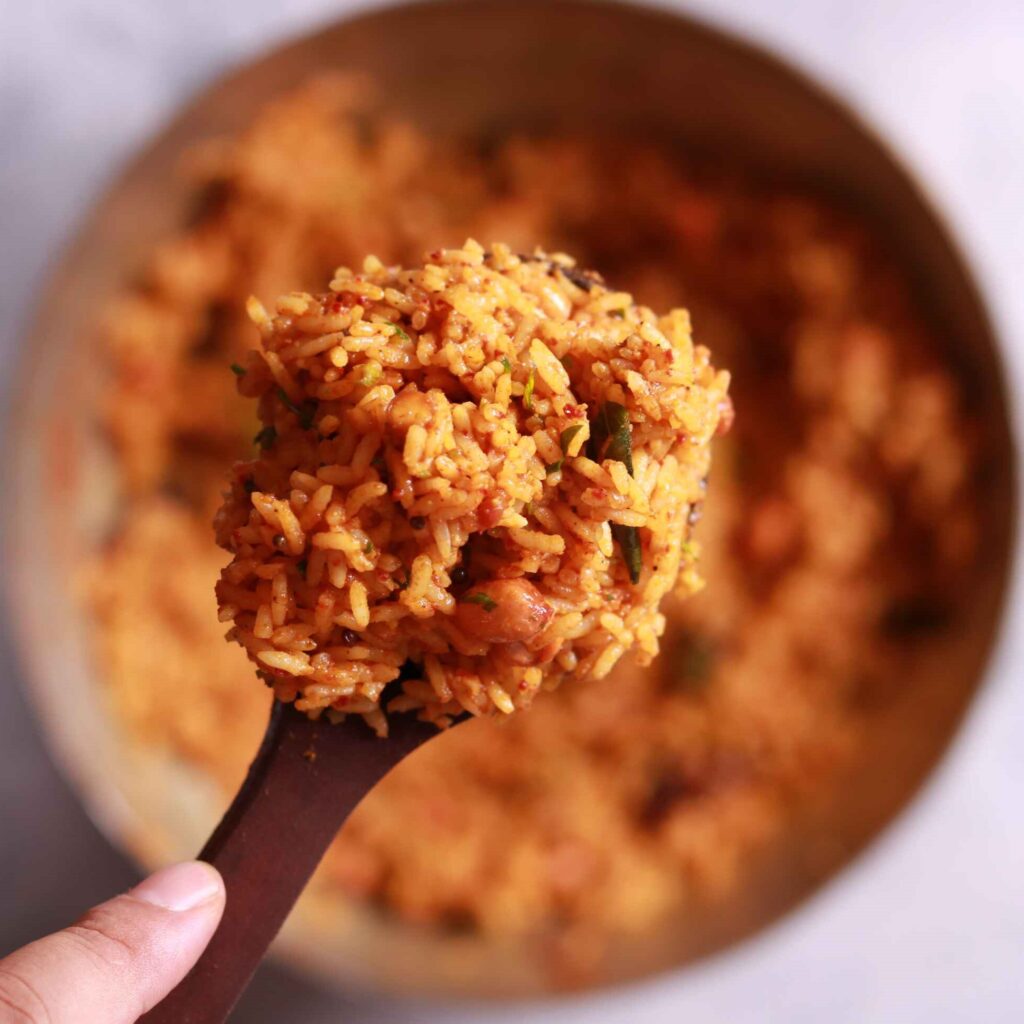
The History of Tamarind Rice (Puliyogare)
Determining the historical roots of tamarind rice (puliyogare) is like pinpointing the lovely aroma of freshly ground spices; you may not get to the source but will undoubtedly relish the search. Over the years, tamarind has also been extensively used and grown in South Asia. The ancient scriptures of India include tamarind as both a food and a medicine, beneficial for internal heat and excess liquid build-up.
Some say that tamarind rice was first prepared in temples as “prasad”—food prepared during a religious function and distributed among the worshippers. Gradually, this rather simple rice dish with tamarind became very popular and made its way to households in the southern states of India. All the regions seem to have certain differences: some prefer it powdery and spicy, others a bit tangy.
The Cultural Importance of Tamarind Rice
The tamarind rice recipe is more than just food; it’s an experience. In South Indian households, particularly in Tamil Nadu, Andhra Pradesh, and Karnataka, this dish garners significant attention during festivals or religious observances. Often prepared as part of the customary “Naivedyam”, it’s an offering made to the Gods and served to family members and guests afterwards. Its ability to remain fresh for extended periods makes it a popular choice for travel and an essential item in picnic baskets.
Many devotees have noted the significance of tamarind rice during Hindu festivals. It is commonly enjoyed during Pongal, Ugadi, and Ganesh Chaturthi. Its bright colour, tangy taste, and fragrant aroma compel everyone to partake in the food and the accompanying moments.
Tamarind Rice (Puliyogare) Recipe in Different Regions
While enjoyed throughout South India, each region adds its unique twist to the recipe:
- In Tamil Nadu, tamarind rice often includes roasted peanuts and coconut for added texture.
- In Karnataka, a hint of asafoetida (hing) enhances savoury notes.
- Andhra Pradesh offers a spicier version with extra chillies and fenugreek.
- In some parts of Kerala, it might be wrapped in banana leaves with grated coconut for a subtle sweetness.
Why Tamarind Rice is a Picnic and Tiffin Favorite
Tamarind rice has become popular as a picnic staple for several reasons:
- It doesn’t spoil quickly, making it ideal for long journeys or outdoor adventures.
- Its intense flavors remain satisfying even at room temperature.
- Easy to pack, it pairs well with minimal accompaniments—a handful of roasted peanuts or papadums is often sufficient.
Tips for Perfect Tamarind Rice
- Use Fresh Ingredients: Fresh tamarind will yield better flavour than bottled paste.
- Adjust Spice Levels: Modify the number of chillies based on your heat preference.
- Resting Time: Letting the rice sit after mixing allows the flavours to develop fully.
- Storage: Tamarind Rice can be stored in an airtight container in the refrigerator for up to two days.
Tamarind Rice Recipe: Photo Gallery









FAQs about Tamarind Rice Recipe
- What is Tamarind Rice (Puliyogare)?
Tamarind Rice, also known as Puliyogare or Puliyodharai, is a popular South Indian dish made with rice, tamarind pulp, and a blend of spices. It is known for its tangy flavor and is often served as a temple offering or during festivals. - What kind of rice is best for tamarind rice (Puliyogare recipe)?
Short-grain rice like Sona Masoori or Ponni rice is preferred due to its texture and ability to absorb flavours. - How to make Tamarind Rice?
Tamarind Rice typically involves cooking rice separately, preparing a spice mix with tamarind paste, peanuts, and various spices, and then combining them. Recipes often vary by region, with different spices and methods used. - Is Tamarind Rice spicy?
Tamarind Rice has a balanced flavour profile, including tanginess from tamarind and spiciness from chillies. However, the spice level can be adjusted according to personal preference by modifying the number of chillies used. - Can I make Tamarind Rice in advance?
Yes, Tamarind Rice can be prepared in advance and stored in the refrigerator for up to two days. Letting it sit for a while after cooking is often recommended to allow the flavours to meld. - What are some excellent pairings for Tamarind Rice?
Tamarind Rice pairs well with side dishes such as papadums, yoghurt or raita, and pickles. For a complete meal, it can also be complemented by serving it with fried snacks or salads. - Can I use store-bought tamarind paste?
Yes, store-bought tamarind paste works fine; however, homemade pulp offers a fresher taste. - How long can I store tamarind rice?
It can be stored in the refrigerator for up to 3 days but is best enjoyed fresh. - What is Pulikachal?
Pulikachal is the concentrated tamarind spice paste used as a base for tamarind rice. - Why is tamarind rice considered travel food?
Its lack of perishable ingredients means it can be stored without refrigeration for several hours. - Can I add vegetables to tamarind rice?
While traditional recipes don’t include vegetables, you can add cooked ones like carrots or peas.
Easy Puliyogare recipe with step-by-step instructions
Ingredients
For the Dry Masala Powder:
- 2 no Dry Red Chilies Bedgi or Kashmiri
- 2 tsp Coriander Seeds
- 1 tsp Cumin Seeds
- 1/8 tsp Methi Fenugreek Seeds
- 1/8 tsp Black Peppercorns
- 1 tsp Sesame Seeds White
- 1/2 tbsp Dry Coconut
For the Tamarind Rice Masala: Pulikachal
- 2 tsp Vegetable Oil
- 1/8 tsp Hing Asafoetida
- 3 tbsp Raw Peanuts
- 1 tsp Urad Dal split Bengal gram
- 1 tsp Chana Dal
- 2 no Dry Red Chilies Bedgi or Kashmiri
- 2 no Sprigs Curry Leaves
- 1/2 tsp Turmeric Powder
- 2 tsp Table Salt adjust to taste
- 1 tbsp Jaggery
- 1 Small Ball of Tamarind soaked and pulp extracted
- 1/4 cup Water
- 2 no Green Chilies Sliced
- 1 tbsp Chopped Coriander Leaves for garnish
Instructions
Prepare the Dry Masala Powder
- In a pan, slow roast the dry red chilies, coriander seeds, cumin seeds, methi seeds, black peppercorns, sesame seeds, and dry coconut until they turn aromatic.
- Let the mixture cool down a bit, then grind it into a coarse powder. Set aside.
Cook the Tamarind Rice Masala: Pulikachal
- Heat oil in a pan over medium flame. Add the raw peanuts and fry them until golden. Remove the peanuts from the pan and set aside.
- In the same pan, add urad dal and chana dal. Fry until they turn light brown.
- Toss in the dry red chilies, Slit Green chilli and curry leaves, and sauté for a few seconds.
- Lower the flame, and immediately add turmeric and prepared dry masala powder. Stir it gently.
- Pour in the tamarind extract and add jaggery, salt, and water. Let it simmer until the water evaporates slightly but keep the masala moist enough to coat the rice evenly.
- Add the fried peanuts and chopped coriander leaves to the masala.
- Finally, add the cooked rice to the pan. Mix everything well until the rice is thoroughly coated with the masala.
- Serve the tamarind rice hot, garnished with more coriander leaves if you like. Enjoy!
Explore Our Latest Recipes
-
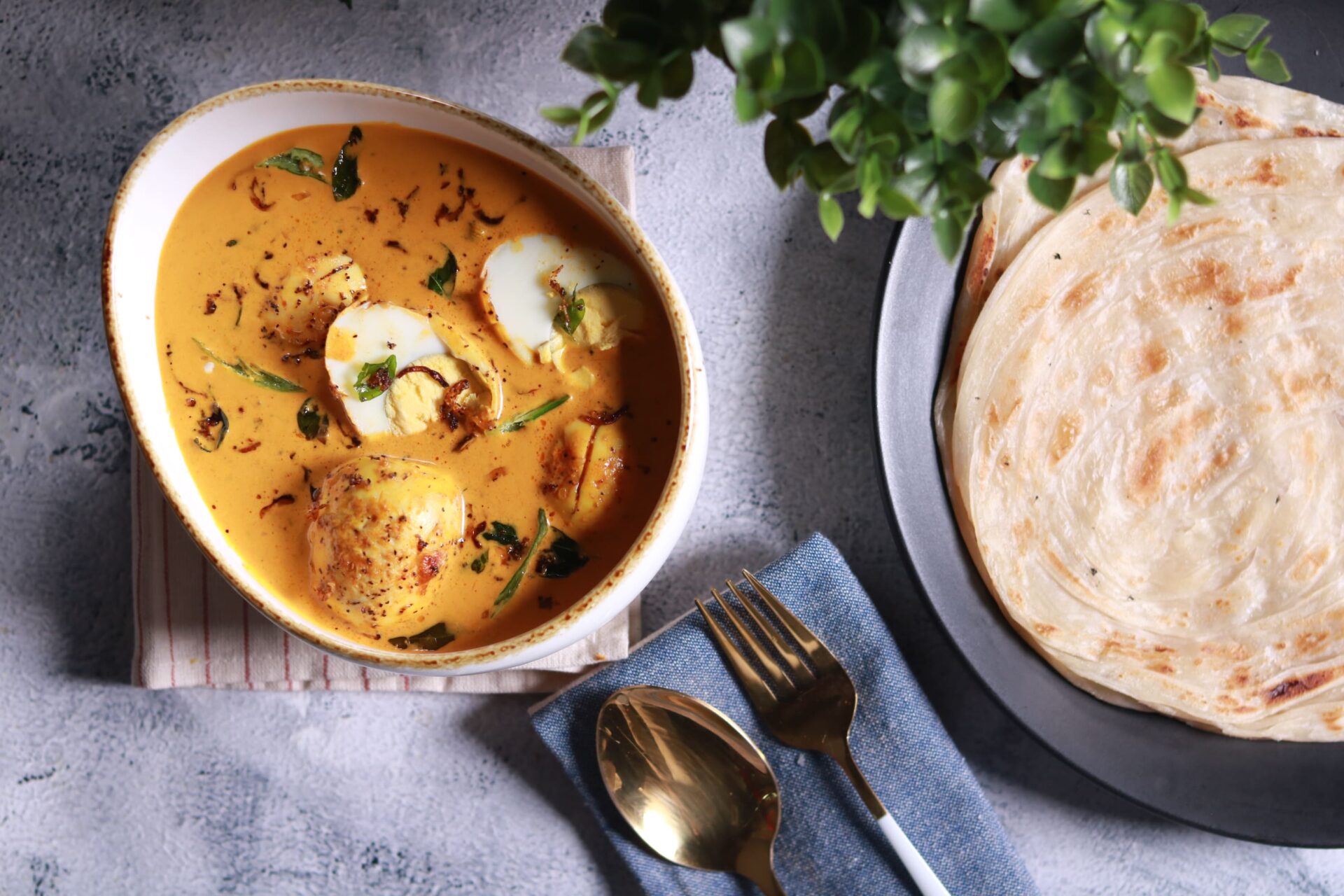
Traditional Kerala Egg Curry with Coconut Milk (Mutta Curry)
If there’s one dish that makes a slow, rainy morning in Kerala feel extra cozy, it’s a Traditional Kerala egg curry with coconut milk, served with soft Paratha or lacy dosa. This is the kind… Read more
-

Chole Kulcha – The Heart of Punjabi Street Food
Chole Kulcha- If you’ve ever visited North India, you’ll know Chole Kulcha isn’t just a meal, it’s a whole experience. Picture bustling streets filled with the scent of spiced chickpeas, fluffy kulchas hot off the… Read more
-

Kala Chana Chaat :- A Wholesome Snack Bursting with Flavor
If you love Indian snacks that tick all the boxes: healthy, crunchy, tangy, and totally addictive, then Kala Chana Chaat is your new favourite. It’s a dish that comes together effortlessly yet feels incredibly refreshing.… Read more


